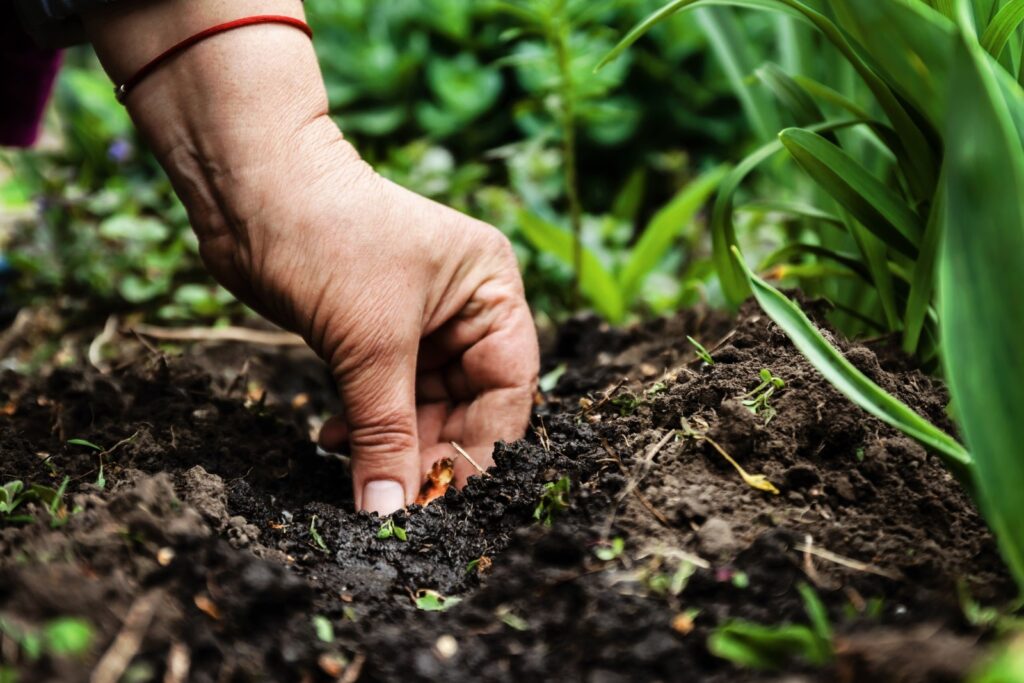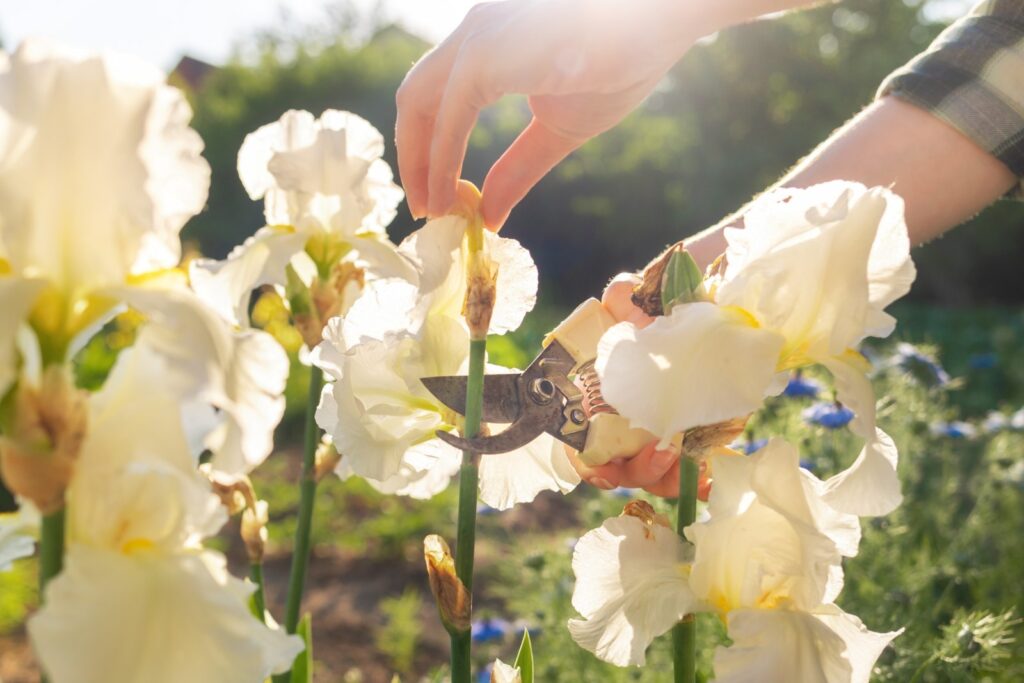
Iris are very well known and present flowers in many gardens, and very pleasant! It is a perennial flower of the Iridaceae family, which are usually sold as bulbs, and which produce large, colourful and fragrant flowers, often in blue and purple tones, but also yellow, orange, pink/red etc…
The final height of the plant can vary between 20 and 90cm! It is planted from September to June for a flowering from January to August, but an autumn plantation is recommended!
Fact: By mixing varieties of dwarf iris, intermediate iris and large iris, which have staggered flowering, it is possible to have non-stop flowers for 2 months!
PLANT
Irises grow easily in ordinary soil, even dry and chalky, with a strong exposure to the sun (at least 3/4 of the day). Beware of soils that are too heavy and too clayey and that retain too much water in winter, as the bulbs could rot.
Before planting, prepare the soil well by turning over the soil deeply in order to eliminate all traces of weeds and to allow an easy development of the roots. Take advantage of this to incorporate gravel or coarse sand if the soil is heavy.
Once this is done, plant the rhizomes (or bulbs) in such a way that they remain visible, because a too deep plantation could compromise the blooming (which by the way generally intervenes the year following the plantation). Leave at least 10 to 20cm between each bulb, so that the plant has room to grow.
Then all you need to do is water slightly after plantation to support the rooting.

CARE
Once planted, irises in the ground do not really require much care, and should only be watered in case of very hot weather and/or prolonged drought. As for the rest of the maintenance, it is rather traditional:
Keep the soil clean and weed-free, and regularly remove damaged and dry leaves.
If you live in a particularly windy area, your plants may need a stake to strengthen the stems.
Remove the flower stems once the flowers have faded to avoid the formation of seeds that unnecessarily deplete the plant.
The potted iris, on the other hand, requires more regular watering, usually when the substrate is deeply dry. You can therefore feed it with a liquid flower fertilizer and add clay balls to your pot/garden box to ensure good drainage!

ENJOY
Once planted, the iris can withstand winter very well, its resistance to frost and cold temperatures reaching -15°!
The cold even contributes to the good development of the plant, so don’t worry about their survival throughout the year!
Once you have decided on the organization of your flowers, you will be able to enjoy them for a long time because the life span of an iris can go from 5 to 20 years!
And if you feel like a change, you can learn about the many varieties that exist, with their unique shapes and colors!
